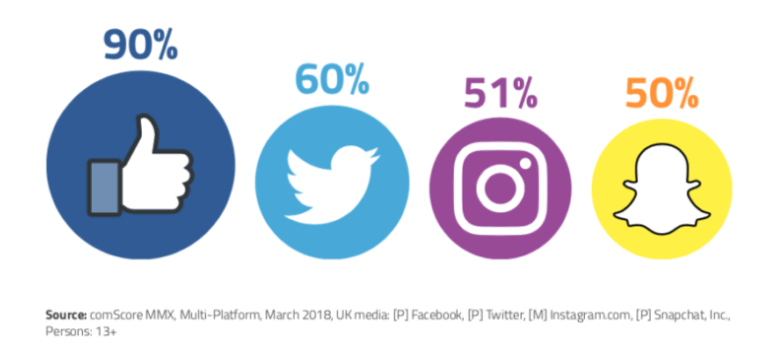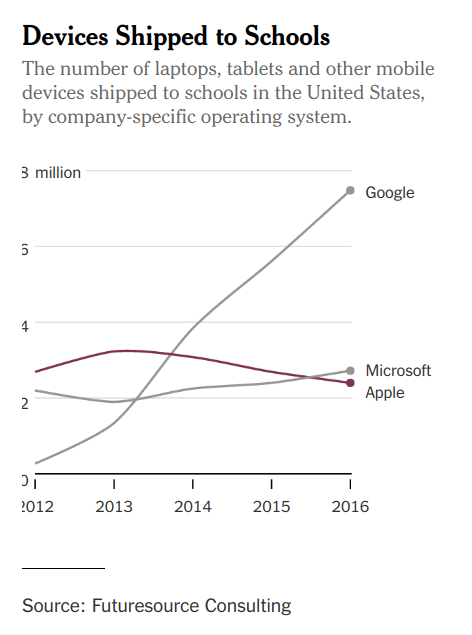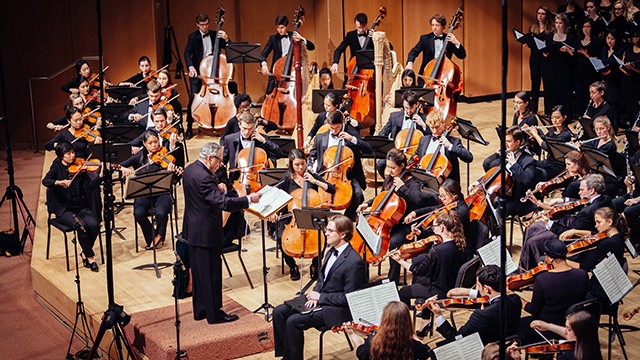From Classroom to Collaboratory: #EdTech works best when it brings people together.
If you’re working in education then your learners have no concept of a world without the internet.
By 2018 the number of people using the internet had reached over 4 billion maintaining a growth rate of +7% year on year, with more than 3 billion people also active users of social media of various kinds.
Social media has people at its’ core, and education is the same. Technology cannot replace a teacher anymore than an image of a meal on a laptop can replace hunger.
There are more complex processes at work here and it’s dependent on collaboration.

Social media continues to grow, up over 13% year on year. Don’t believe any headlines about giants like Facebook facing headwinds. Humans are fundamentally social creatures.
The phenomenal rise of Facebook in the early years of the digital age was arguably because it connected people to others in an open, social space where shared values, and prejudices, aligned.
My contention is that where technology meets the learning process it works best when it brings the teacher and the learner closer together, along with wider peers.
Too often it does not, but if we look at the platforms globally in 2018 making the biggest difference they have collaboration and people at their core by design, and this is a common theme in their success.
Cloud first, mobile first, learning first.
More than five billion people were using a mobile device in 2018 and growing. Traditional technologies such as desktops and laptops show declining usage.
Cloud based mobile, social based applications continue to dominate in the digital age and for both education and the commercial world the implications and opportunities continue to emerge.
Can your lessons be accessed from a mobile device? If not, why not?

One of the key lessons learned to date is that where technology brings people together the impact is greater than when it does not.
In education MOOCs are a good example of this, although perhaps as a warning to others.
From the classroom to the collaboratory.

Some years ago I undertook an action research project in collaboration with IBM designed to deliver an online learning platform. Titled ‘Classroom in the Cloud’ we had lofty ambitions but the project struggled as we learned a powerful lesson during the dawn of the online learning era.
For digital technologies to really have an impact in our world of education it must bring people together and whilst our classroom in the cloud intended to do this the technology was neither simple to use or especially effective.
We published our research paper in the International Journal of Cloud Computing and one of our key lessons was that learning is a fundamental social process with people, not technology, at its core.
My contention is that this same reason is why most MOOCs have failed. Posting content online without a social dimension does not create an engaging process, hence I once described MOOCs as the digital equivalent to Siberia.
In the years that have followed much has changed. Cloud technology has moved from the periphery to the core as most organisations either have, or are developing, a digital vision and roadmap that places a cloud first approach at its core. It’s creating new opportunities for educators that cannot be ignored.
‘The times they are a-changin’.
{https://soundcloud.com/lougouu/the-times-they-are-a-changing-bob-dylan}
It was back in 1964 when Bob Dylan sang ‘Then you better start swimmin, or you’ll sink like a stone, for the times they are a-changin’ written as an anthem for the changing world that Dylan observed around him.
Closer to home in the Church of England School where I am Chair of the Board there is an often heard phrase that goes:
If you want to hear the sound of God laughing, tell him about your five year plan.
Our world is changing fast but within that change there are new opportunities in the trends we can observe and it should be good news for educators if it’s embraced.
In the opening years of the digital age much of the change we see around us whether it be automation, artificial intelligence, big data or wider, the theme is consistently technology enabled change and its transforming our world of work and the education system that supplies the people within it.
Ignore the trends and, as Dylan sang, education will sink like a stone as it fails to engage or stay relevant to the world that employers operate within. Let’s explore some of the key themes impacting on education.
The rise of Cybergogy.
Learning isn’t going online it’s already there it’s just that some educators missed the invite. Knowledge sharing platform Zeqr has revealed that in 2016 more than 5.8 million students were enrolled in online courses and that globally by the end of 2019 some 50% of classes will be delivered online.
Corporate online learning has grown by a staggering 900% in the last 16 years. The same findings reveal that more than 60% of video is now consumed via mobile devices. In the digital age a mobile phone as a learning tool is as relevant, perhaps more so, than a pencil.
Trends such as these raise significant questions, challenges and opportunities for our world of education where technology can support teachers to be healthier, happier and more productive in their roles when used intelligently and supported in the right way.
We now have the term cybergogy receiving increasing attention as we learn and adapt teaching approaches to be better aligned to the digital age, along with a recognition that we are living in an increasingly connected world.
Is learning ever completely offline?

For teachers thinking about technology today, the question is how to use technology effectively to enable deeper learning and the acquisition of skills, knowledge and behaviours aligned to what our world needs.
Learning is enhanced when it’s a social process, and technology can both help to create deeper engagement and knowledge acquisition.
There is growing evidence that intelligent lesson design that integrates technology that enhances the link between the teacher and the learner will deepen engagement and support knowledge retention.
Welcome to the collaboratory.
Some trends in digital learning really stand out. Take the rise of cloud based learning solutions like Google Classroom now enabling tens of millions of learners to collaborate with one another in platform agnostic online spaces, sharing knowledge, nurturing ideas and creating self-sustaining learning communities.
Google’s adventure in the education space has been spectacularly successful by any measure, with G-Suite now used by more than 80 million educators globally.
Why this happened and how it happened in such a short time are questions that reveal insights applicable to any educator whether they use Google technology or not.
Part of the answer is found by simply looking at how we live, work and learn now when it’s our choice.
We use apps, phones and the internet to make our lives easier, more efficient and better.
Google Classroom, along with a number of wider technologies, does this.
Learning becomes effortless, location independent and collaborative, exactly aligned to the skills and characteristics of high growth high value added digital businesses comprising of cloud workers.
Students in Schools, Colleges and Universities today will likely be part of the gig economy as cloud workers, not working from a fixed office base on a desktop tethered to a wall.
Cloud technology is both now and the future, and the future is where we are all heading. Education must prepare people to make the most of it.
The United States has been leading the way with this as evidenced by the changing devices used by educators within the classrooms there. Devices like chromebooks are everywhere in education in the United States.
This has not been without controversy and a quick Google search will find many articles questioning the ‘motive’ of Google in enabling educators to work smarter, although dig a little deeper and you often find the source of such articles and the motivation of its authors is to sell education different, and more expensive products, that are often commercially driven, rather than education led.

Cloud first technology is also enabling educators to better support digital literacy within the classroom.
Almost every job that exists today requires the use of some aspect of technology and research by the World Economic Forum suggests that 65% of primary school children today will ultimately be deployed in roles that don’t exist yet.
Educators play a fundamental role in enabling learners to make the most of this rapidly changing world and have a wonderful new set of tools to support this.
Online learning spaces like Google Classroom and wider G-Suite apps enable learners to develop safe and secure learning communities not confined by the conventional space of the classroom or the teaching hour.
Technology can be a major enabler of this if it is collaborative by design.
The late Steve Jobs once said: “Great things in business are never done by one person”, and the technology we deploy in teaching and learning should be cognisant of this approach.
Too little time and too much to do.
Teachers are increasingly stretched and technology that can’t be trusted to work or that’s complex to use just adds to the pressure of the job.
Technology should be simple, just work and enable new forms of pedagogy that better support collaborative learning.
There are lots of education technology tools that can reduce workloads, automate processes (increasingly including help with marking specific types of assessment) and provide a wealth of analytics and insights to support busy people to both be more effective and get valuable time back at the same time as enabling better collaboration.
Teachers sharing information in peer to peer networks and sharing lesson plans and content can save valuable time and enhance learning outcomes for both teachers and learners.
Flipping learning.
By deploying cloud based learning technologies teachers can flip the classroom to enable videos and content to be digested on any device at any time outside of the formal teaching hour.
This approach has the twin benefits of creating effective self directed learning along with supporting deeper learning and understanding during the valuable lesson time with the teacher.
21st Century Classroom
Incorporating education technology into the classroom makes sense when thinking about preparing people for the collaborative world of work. Few businesses operate without collaboration.
Businesses include teams and education technology can support learners to develop the critical collaborative and team-working skills that industry needs.
Teaching to the test.
If we do have to operate with standardised testing, then evidence is increasingly showing that learning undertaken using digital tools demonstrates greater knowledge retention and success.
Although the study was looking at employees rather than students in compulsory education, research in a Brandon-Hall study demonstrated that learning using digital tools used 40-60% less time.
Wider findings published by the Research Institute of America found that digital learning can increase knowledge retention by up to 60% compared to conventional learning approaches.
EdTechs Unfinished Symphony

Why is it so important that we transition from the classroom to the collaboratory?
In short, diversity, or specifically, diversity of thinking. When we collaborate we bring together a diversity of ideas, experience, insights and perspectives that not only reduce the likelihood of unconscious bias negatively impacting on outcomes but better enables new knowledge acquisition, insights and innovation.
That is why the best businesses are built on a diversity of talents, and the greatest learning also.
As American Professor H E Luccock once said: “No one can whistle a symphony. It takes a whole orchestra to play it”.
Jamie E Smith, Executive Chairman, C-Learning












Responses